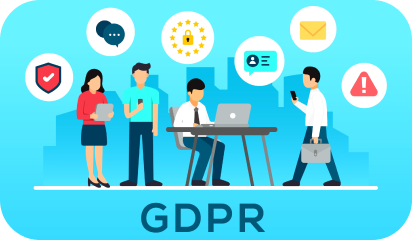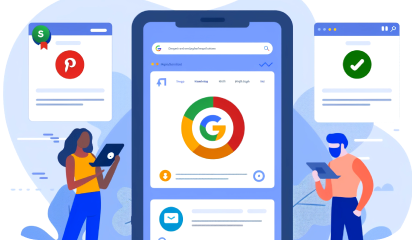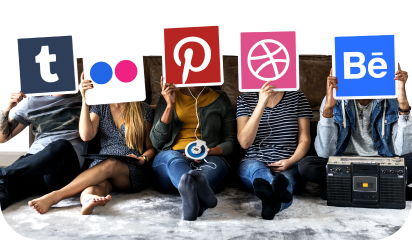We are not saying that we do not like WordPress but old man has to move the order to pave way for new and what better than Craft CMS to do so.
The key difference is how both the CMSs approach development. WordPress is a have-it-all and pick what you need approach, while Craft is ripped to basics so that you have a blank slate to build what you need.
Craft CMS is minimalistic, it’s simple, it’s dynamic, and offers key features. In fact, our developers have chosen right and wrong enough times to pick a final side.
You might not believe us right away so here’s what made us a fan.
Fields in Craft

Craft is a boon if you love neat organization. With Custom Fields you can get second level of control over your content type. Different content types ask for different formatting and layouts. Custom Field lets you define those types.
Craft’s Custom Fields & Sections make it easier to manage different types of content while WordPress makes up for it using plugins like ACF (Advanced Custom Fields).
Matrix block model in Craft

Matrix is like Legos, you can use the building Blocks to create a desirable layout for your content. It is a fun way to create complex layouts with ease. The rearrangement of these blocks is even easier. The blocks can be rearranged with a simple drag and drop without affecting the code in the template. You can define field types in the blocks.
WordPress’ ACF plugin adopts heavily from the Matrix content blocks of Craft for custom layouts but it isn’t as efficient as the Matrix.
Live Preview in Craft

Craft’s Live Preview allows you to make changes in real time. You can see the changes as you make them. It splits the screen, showing you the changes in real time on one side of the screen while you make those changes in other.
Craft’s Live Preview lets you review the changes in real time while in WordPress you will have a separate tab open for every little change you make.
Sections in Craft

With Craft you can create different sections for different content types:
- ‘Single’ section for unique content requirement.
- ‘Channel’ section for streamlined content with an order.
- ‘Structure’ section for content type which follows a predefined structure.
As Homepages have unique content requirements, they’re made in the Single section. News and Case Studies need to be ordered by date so they are made in the Channel section while a page like Services needs a predefined structure which can be achieved in the Structure Section.
Craft completely focuses on Content Management and makes it easier for your users to consume content & design distinctively. WordPress on the other hand doesn’t have any such feature.
Localization in Craft

When in Rome, speak as Romans do. Because Craft conveniently lets you. Localization is a powerful Craft feature. It lets you present content on a website in a specific language to target specific audience. The feature proves to be very useful when your audience is of different nationalities. Localization can be achieved by setting up and enabling locales. You can simply switch to the desired locale from the sidebar of the edit entry section, even in a particular section.
Localization translates your page’s content according to your target audience. WordPress relies on heavy plugins that interrupt with the security too.
Relations in Craft

Craft’s relationship engine allows you to form relations between posts with entry fields. You can create relations within the entries. Make an entry field determine the field type and update the template code. Drag, Drop, done. It’s that easy in Craft.
Craft’s Relationship engine allows you to form relations between post types while in WordPress you will be creating a separate category and some PHP tweaks or a plugin.
One-Click Updates in Craft

Craft’s update feature is highly underestimated. It provides the critical updates vis-a-vis features, improvements, bug fixes, security enhancements, and plugins in a single easy-to-install package.
Whenever there is a new update in Craft, it will appear in the control panel as a notification badge. You can download the update just by clicking on the badge. Craft even takes the precautionary measure of taking a backup of your data before installing any update package. Pretty clever! Isn’t it?
You can just go through the brief about the bug fixes, security enhancements, and improvements which come with the package before actually installing the package.
Craft’s One-Click update feature literally updates everything in a single click while in WordPress you have to update every other element almost exclusively.
Security in Craft

Since Craft’s one-click update feature is so efficient, users don’t delay the most important part of keeping a CMS safe, Updates.
It’s just a matter of a click and Craft takes care of the rest.
Craft CMS provides freedom of customization, central update system, and state-of-the-art security, all at a one-time fee of $299. WordPress on the other hand is free, at least initially. For the added security — which is a necessity — you’ll have to pay up to $500/month.
Looking at the vulnerabilities that the dependency on plugins bring, Craft CMS does not only look like a safe bet but also a smart decision.
Want to know more about either of the CMSs? We can help you decide sooner and decide better. Head here and drop all your queries.
If you are interested in learning h












